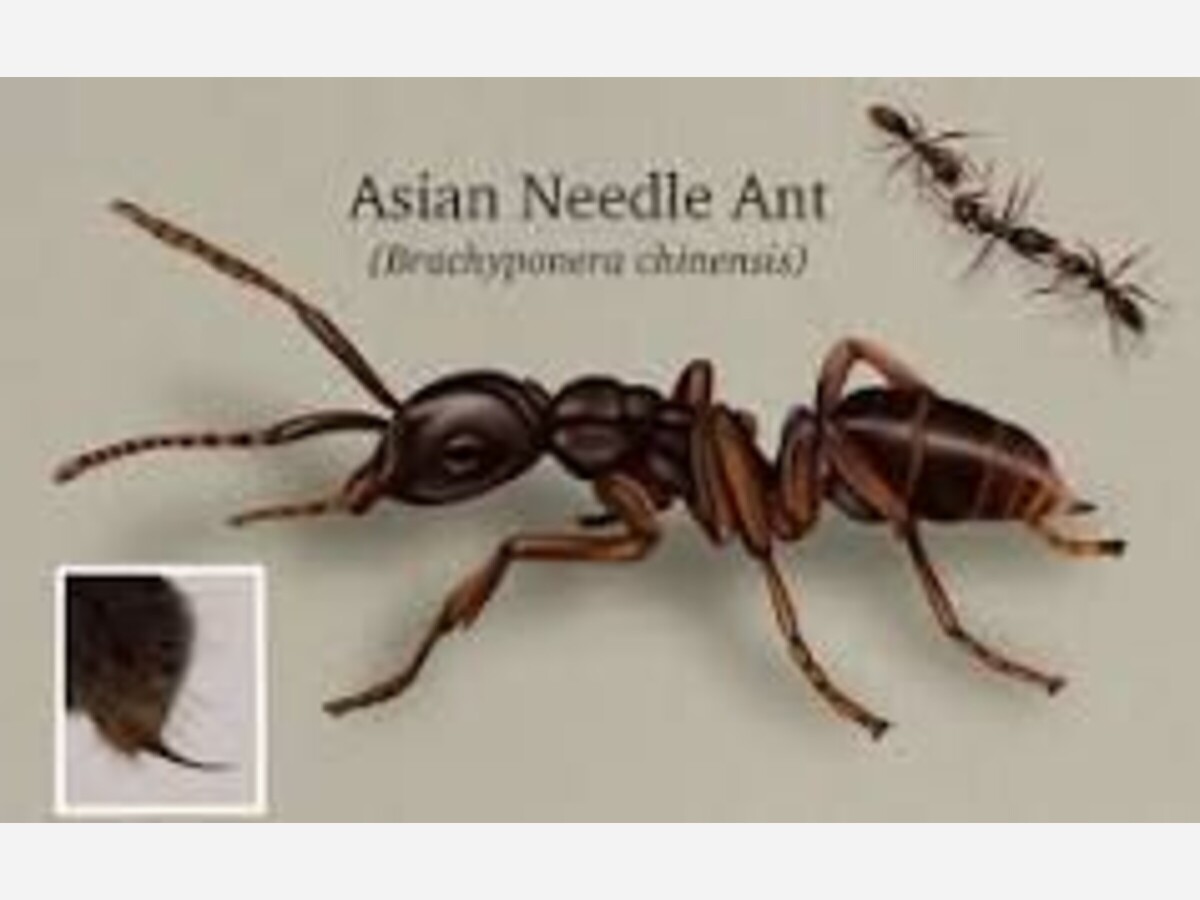Image


Between GA--Georgia is facing a growing threat from a small but dangerous invader: the Asian needle ant. This species, known for its painful and potentially deadly sting, is spreading rapidly across the state and much of the Southeast, raising concerns among scientists, health officials, and homeowners alike.
The Asian needle ant (Brachyponera chinensis) is a dark brown to black ant, about 3/16 of an inch long, with lighter orange-brown legs and antennae. Native to East Asia—including China, Japan, and the Koreas—it was first detected in the United States in 1932, in Decatur, Georgia. For decades, it remained largely unnoticed. But in recent years, populations have exploded, and the species is now considered a major invasive pest throughout the Southeast and beyond. Unlike many invasive ants that prefer disturbed areas, the Asian needle ant is especially sneaky. It can colonize undisturbed forests, nesting under logs, stones, and leaf litter—often going unnoticed by residents and scientists alike.
The Asian needle ant is infamous as a medical pest. Its sting injects venom that can cause severe pain, swelling, and, in some cases, life-threatening allergic reactions (anaphylaxis)—especially in people with allergies to bee or ant stings. Several cases of anaphylactic shock in Georgia residents have been reported following stings from these ants, a rate higher than that seen with fire ants. The pain from a sting may also recur days later, making encounters particularly unpleasant.
Beyond health risks, Asian needle ants are disrupting Georgia’s native ecosystems. They outcompete and displace native ant species, some of which are vital for seed dispersal and soil health. Their predatory behavior targets termites and other insects, and their dominance can lead to significant reductions in native biodiversity and long-term impacts on forest understory regeneration.
Asian needle ants are now established in more than a dozen states, with their range stretching from Washington state to Florida. In Georgia, they are prevalent in both urban and forested areas—especially in moist, shaded environments under logs, rocks, and debris. Unlike fire ants, they do not build visible mounds or follow foraging trails, making detection more difficult.
Anyone spending time outdoors in Georgia—especially in wooded or leafy areas—could encounter these ants. Individuals with known allergies to stinging insects are at particular risk and are advised to carry an EpiPen and familiarize themselves with the ant’s appearance.
Proper identification is critical, as many ant species are harmless. Residents who suspect they have found Asian needle ants are encouraged to send photos or specimens to local University of Georgia Extension offices for confirmation. Keeping yards free of logs, leaf litter, and debris can help reduce nesting sites. Elevate and dry firewood to make environments less hospitable to the ants. For infestations, pest control professionals can provide targeted baiting and treatment. With ant populations peaking in summer, vigilance is key. Homeowners should be especially cautious when working in gardens, moving firewood, or spending time near hardwood forests.
The Asian needle ant’s ability to thrive in both natural and urban environments, combined with its medical and ecological impacts, makes it one of Georgia’s most concerning invasive species this summer. Identification is critically important—not only for protecting public health, but also for safeguarding Georgia’s native ecosystems. If you believe you have encountered an Asian needle ant, contact your local extension office for guidance and, if stung and experiencing severe symptoms, seek medical attention immediately